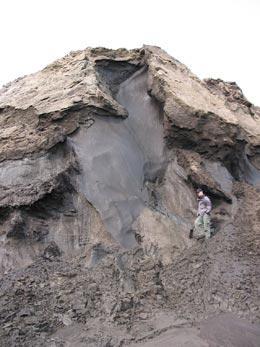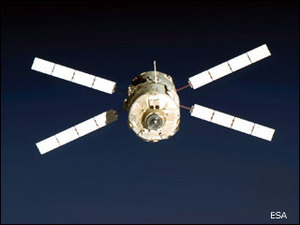
|
| ©Duane Froese, University of Alberta
|
| Undergound ice can last a long time
|
A 740,000-year-old wedge of ice discovered in central Yukon Territory, Canada, is the oldest known ice in North America. It suggests that permafrost has survived climates warmer than today's, according to a new study.
"Previously, it was thought that the permafrost had completely disappeared from the interior about 120,000 years ago," says Duane Froese, an earth scientist at the University of Alberta in Edmonton, Canada, who is the author of the study published today in
Science. "This deep permafrost appears to have been stable for more than 700,000 years, including several periods that were warmer and wetter."

